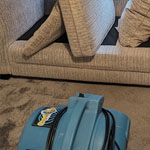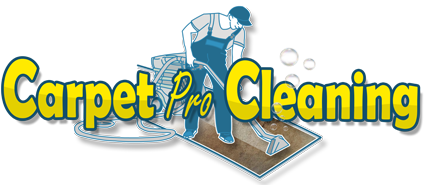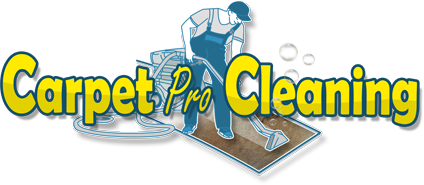
Choosing the right sofa is about more than just comfort and style – it’s also about how practical it will be in your home. As a professional carpet and upholstery cleaner, I’ve seen how different fabrics perform over time, and how much easier (or harder) they are to keep clean. Whether you have kids, pets, or just want a sofa that lasts, understanding the pros and cons of different sofa fabrics can help you make the best choice.
Microfibre – The All-Round Winner
The easiest sofa fabric to clean – Microfibre is one of the easiest fabrics to clean and maintain. Its tightly woven fibres naturally resist stains and spills, making it a popular choice for families and pet owners. A quick vacuum usually removes dust and crumbs, and most marks can be cleaned with gentle solutions.
Pros: Durable, stain-resistant, soft, affordable.
Cons: Can show water marks if cleaned incorrectly.
Ease of Cleaning Score: 4/5
Leather – Stylish and Wipe-Clean
Leather sofas are great if you want something that looks smart and is easy to wipe down. Spills don’t soak in, which makes it ideal for homes with children. However, leather does need conditioning to prevent it from drying out or cracking over time.
Pros: Easy to wipe, long-lasting, doesn’t hold odours.
Cons: Can scratch easily, sensitive to heat, needs regular care.
Ease of Cleaning Score: 5/5
Cotton and Linen – Natural but High-Maintenance
Cotton and linen sofas have a lovely natural look and feel, but they are more prone to staining. If you choose these fabrics, a stain protection treatment is highly recommended. While they can be spot-cleaned, professional upholstery cleaning will often be needed to keep them looking fresh.
Pros: Breathable, comfortable, stylish.
Cons: Stains easily, wrinkles, not pet-friendly.
Ease of Cleaning Score: 2/5
Velvet – Luxury That Needs Extra Care
Velvet sofas look stunning and feel luxurious, but they can be harder to maintain. The pile can crush, and stains can be tricky to remove without the right methods. I use a special low-moisture technique and grooming brush for velvet cleaning, but DIY attempts can sometimes cause damage.
Pros: Luxurious, elegant, soft.
Cons: Attracts dust, pile can crush, not ideal for pets and kids.
Ease of Cleaning Score: 2/5
Wool Blend – Warm and Durable
Wool blend sofas are strong, durable, and naturally resistant to dirt. They’re a great choice for busy homes, but wool does require the right cleaning approach to avoid shrinkage or damage.
Pros: Long-lasting, resists dirt, eco-friendly.
Cons: More expensive, can be tricky to clean at home.
Ease of Cleaning Score: 4/5
Viscose – Looks Good, Cleans Poorly
While viscose is as soft as silk and comes in many colours, it’s not the best choice for maintenance. It’s difficult to clean, often needs specialist dry cleaning, and can be very delicate. Some professional cleaners even ask customers to sign a waiver before attempting to clean viscose upholstery.
If you’d like to see just how tricky this fabric can be, I’ve written a full guide on Viscose Velvet Sofa Cleaning, where I explain the challenges and risks involved.
Pros: Soft, stylish, dye-friendly.
Cons: Weak fibres, hard to clean, not durable.
Ease of Cleaning Score: 0/5

How to Recognise What Upholstery Your Sofa Is Made Of
Before you can choose the right cleaning method, it’s important to know exactly what fabric your sofa is made from. Here are a few ways to check:
- Look for the manufacturer’s tag: Most sofas come with a small care label (often under the cushions or underneath the frame) that lists the fabric type and cleaning codes such as W (water-based cleaner), S (solvent), WS (either), or X (vacuum only).
- Check the texture: Microfibre feels smooth and slightly suede-like, velvet feels soft and plush with a changing pile direction, leather is unmistakably tough and wipeable, while cotton and linen tend to feel lighter and more breathable.
- Consider the age of the sofa: Older or antique sofas are more likely to use natural fibres such as wool, cotton, or even silk, while newer models often feature synthetic blends like microfibre or polyester.
- Ask the retailer or manufacturer: If you bought your sofa from a showroom or store, they should be able to confirm the fabric details.
Knowing your fabric type is vital – using the wrong cleaning solution or too much moisture on the wrong upholstery can cause permanent damage. If you’re ever unsure, I can identify the fabric for you before cleaning and recommend the safest approach.
Our Professional Sofa Cleaning Methods
No matter which fabric your sofa is made from, the key to keeping it fresh and hygienic is using the right cleaning method. At CarpetProCleaning, I tailor my approach depending on the fabric type.
- Vacuuming: I start by thoroughly vacuuming to remove loose dust, crumbs, and pet hair.
- Fabric-Specific Cleaning: Microfibre, wool, velvet, cotton, and viscose all require different cleaning products and methods. I always test the fabric first to ensure it’s cleaned safely without damage.
- Low-Moisture or Hot Water Extraction: For many sofas, I use professional-grade hot water extraction with carefully balanced cleaning solutions. For delicate fabrics like velvet, I use a low-moisture method to protect the fibres.
- Grooming and Pile Setting: Sofas like velvet and wool blends benefit from grooming with specialist brushes to restore the fabric’s look and feel.
- Quick Drying: Fast drying is essential to prevent problems like mould, odours, or shrinkage. You can read more about how I achieve this in my post on Quick Drying After Sofa Cleaning.
This careful, step-by-step approach not only removes dirt and stains but also extends the life of your furniture.
Why Professional Cleaning Is Safer Than DIY
Many people try DIY sofa cleaning with shop-bought sprays or rented machines, but the results can often cause more harm than good. Too much water, the wrong detergent, or not drying properly can leave behind residue, odours, and even create the perfect environment for mould.
I’ve explained more about this risk in my post Is Mold on Your Couch Dangerous? What You Need to Know. The truth is, once mould sets into upholstery, it’s very difficult to remove safely without professional equipment and knowledge.
Professional sofa cleaning not only gives you a deeper clean but also protects your investment, your health, and your peace of mind.
Free Advice and Estimates
Still not sure wchich is the easiest sofa fabric to clean? If your sofa is looking worse for wear, you might wonder whether to replace it or try professional cleaning. Many of my customers are surprised by how fresh and new their old sofas look after a deep clean. A professional clean can save you money, extend the life of your sofa, and make your living space feel more comfortable.
If you’re unsure whether your sofa is worth saving, I offer free advice and estimates – I’ll tell you honestly if it can be restored or if it’s time to consider a replacement.
Conclusion
The easiest sofa fabrics to clean are usually microfibre and leather, but every fabric has its strengths and weaknesses. The right choice depends on your lifestyle, family, and preferences. And remember – even the most delicate fabrics can often be restored with the right professional cleaning.
Book Your Sofa Cleaning Today
Don’t wait until your sofa looks tired or starts to smell – regular professional cleaning keeps it fresh, healthy, and inviting for your family and guests.
You can book your sofa cleaning directly online at www.carpetprocleaning.co.uk/booking.
Discover more about our professional upholstery cleaning services – Wallasey and across the whole of the Wirral.

